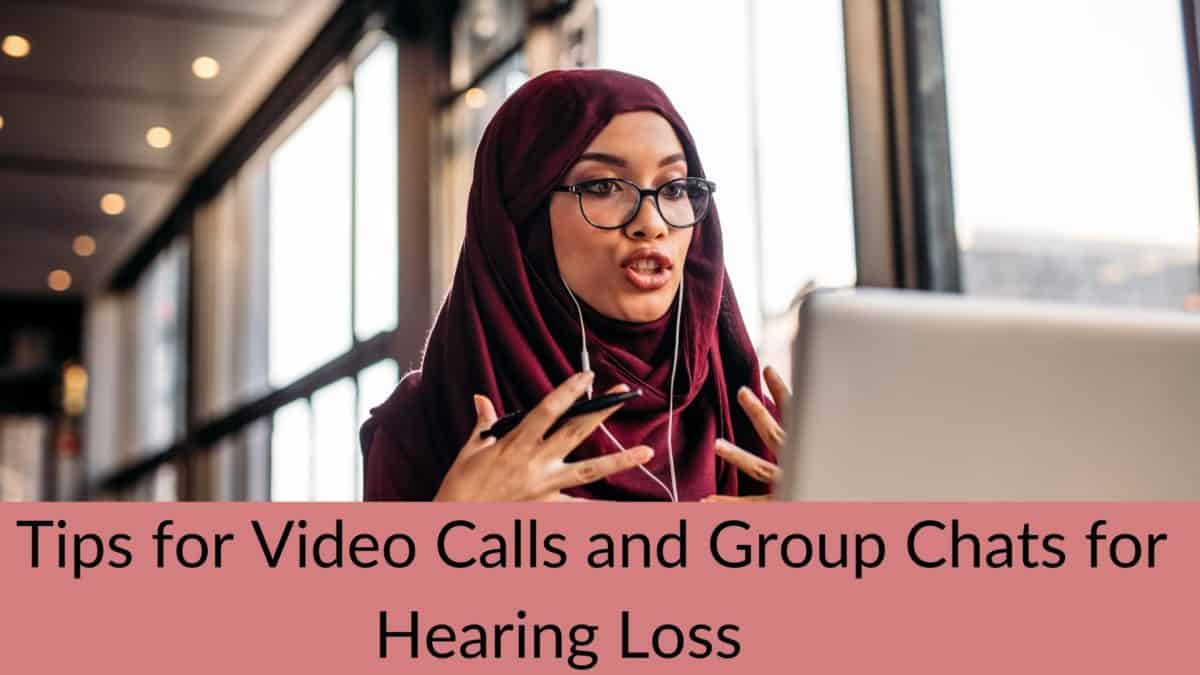- Understanding the Connection Between Tinnitus and Weather - May 17, 2025
- The Most Unexpected Reasons Hearing Aids Can Malfunction - May 9, 2025
- How OAE Testing Unveils Hidden Hearing Loss - April 15, 2025
One of the powerful changes that took place in 2020 was the widespread adoption of video calling. Although the technology existed in the past, the global COVID-19 pandemic made that communication interface a necessity for many people. Whether they were being used for work, education, or personal relationships, video calls became a powerful way to connect with others and to share information in a streamlined manner. Although they come with many benefits, video calls and group chats also come with some challenges.
If you are in a job or educational setting that has relied on video calls in the past year, you are well-aware of some of the potential limitations. Whether due to a slow connection, poor equipment, imprecise placement of technology, or another barrier, the video call can have some serious barriers to fluid conversation. Those who have untreated hearing loss can face even greater challenges. One of the common difficulties is muffled, delayed, or choppy audio quality on calls. While these platforms consistently improve their services, it is important to know how to make the best of what you have right now.
Let’s take a look at some useful tips to improve the quality of video calls and group chats for those with untreated hearing loss.
Set the Stage
When you are ready to make a video call, some preparation can make the difference between a successful call and one that leaves you frustrated. One of the first steps to take is to find a place where you have the best visibility and where others can see you the most clearly. Whether we realize it or not, many of us watch mouth movements and facial expressions to contribute to our hearing. Particularly those who have untreated hearing loss might have developed this ability even further than others.
If you are participating in a video call or group chat, one way you can accommodate those with hearing loss is to make sure you are fully visible and well-lit. Another way to set the stage is to do your best with audio delivery. Some people prefer to use headphones for their video calls, bringing the audio as close as possible to their eardrums. Others find it awkward to speak with headphones in, and they would rather use speakers. For some people the speakers in the computer will suffice, but most will want to pursue a better set of speakers to maximize audio quality and volume.
Use Captioning
The latest versions of most video call and group chat platforms also provide live captioning to assist those with untreated hearing loss. Although imperfect, these technologies can do a remarkable job translating voices into text. If it helps to read text at the same time as listening, these services can be quite helpful. If you are using a platform that does not have a captioning service built-in, you can often add a third-party app to the interface that can provide captioning. If this is not possible, many people have found it useful to use one device for the video call and another computer or tablet nearby that has captioning capability. Some services require the host to enable captioning, so don’t hesitate to prompt your host to make this service available if it will be of service to you.
Seek Treatment for Hearing Loss
Despite the many ways that preparation and captioning can make video calls easier for you to see and hear, the best solution is to pursue treatment for hearing loss. When you receive treatment, video calls and group chats will be facilitated, indeed, but these environments are not the only place where benefits are open to you. In-person conversations can be assisted through treatment, as can a general sense of enjoyment of the richness of the sounding world.
If you have a loved one on a video call platform who seems to be struggling to hear, take the opportunity to encourage treatment. Even if you do your best to make the call accommodated to their hearing needs, hearing aids will be the best and most durable solution across platforms and into acoustic space, as well.
The first step is to schedule an appointment for a hearing test, so don’t delay making the call!

